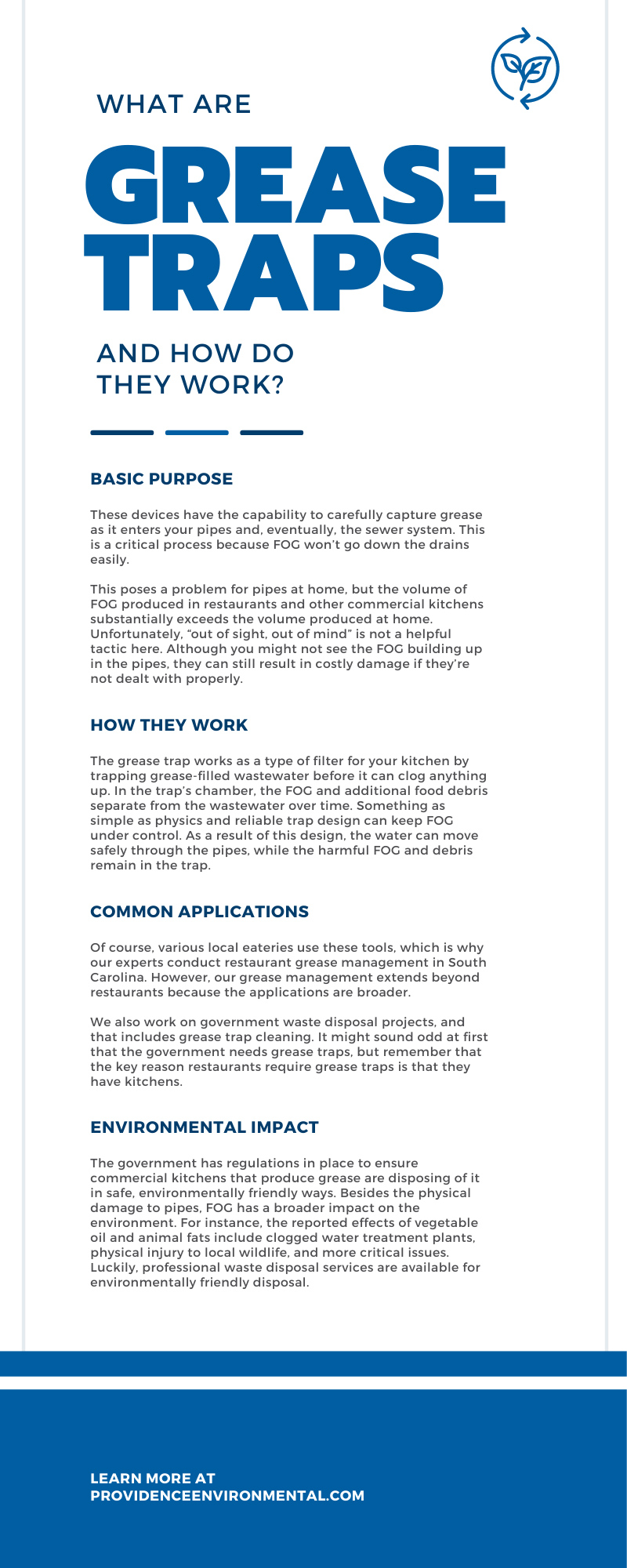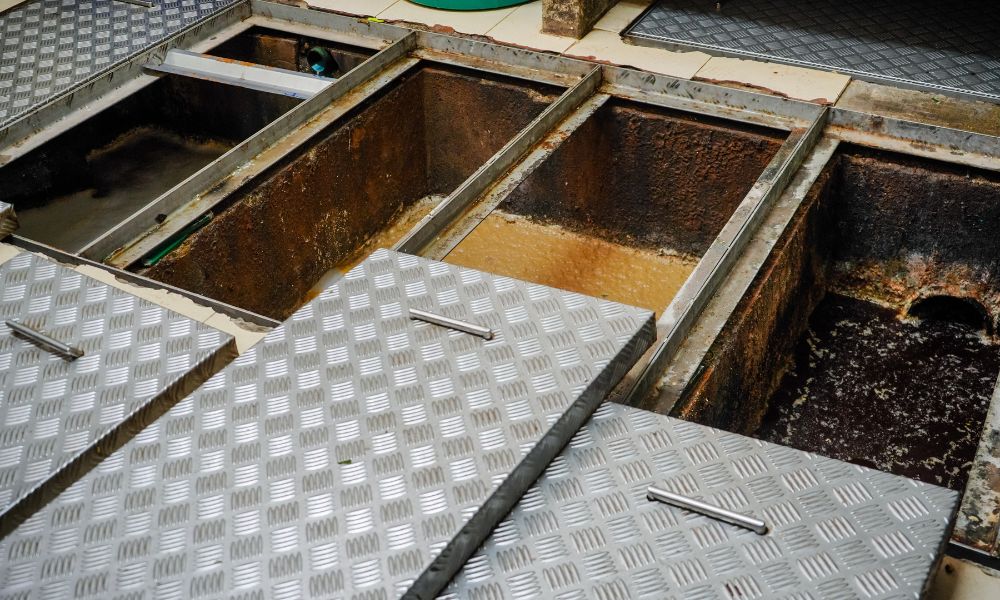FOG is an acronym for fats, oils, and grease. This acronym is important because it symbolizes materials that require careful disposal techniques. FOG is a common byproduct of cooking at home as well as in commercial and industrial facilities. If you’ve ever heard the warning about pouring bacon grease down the sink drain after making breakfast at home, then you’re already familiar with the issues FOG presents.
However, the aforementioned byproducts are more complex to handle when it comes to restaurants and other professional facilities. If you produce FOG on a regular basis, it’s important to understand two questions: What are grease traps, and how do they work? Look through the list below when you’re ready to learn the answers.
Basic Purpose
Suffice it to say that the term “grease trap” leaves little to the imagination. These devices have the capability to carefully capture grease as it enters your pipes and, eventually, the sewer system. This is a critical process because FOG won’t go down the drains easily. Instead, FOG will cling to the walls of pipes and require extensive efforts to remove, especially as they build up more and more over time.
This poses a problem for pipes at home, but the volume of FOG produced in restaurants and other commercial kitchens substantially exceeds the volume produced at home. Unfortunately, “out of sight, out of mind” is not a helpful tactic here. Although you might not see the FOG building up in the pipes, they can still result in costly damage if they’re not dealt with properly. Simply put, wastewater will struggle to flow if FOG and other debris are blocking its passage. Now that you know more about what the equipment does, let’s dig deeper into how it does that task regularly.
How They Work
The grease trap works as a type of filter for your kitchen by trapping grease-filled wastewater before it can clog anything up. In the trap’s chamber, the FOG and additional food debris separate from the wastewater over time. Something as simple as physics and reliable trap design can keep FOG under control. As a result of this design, the water can move safely through the pipes, while the harmful FOG and debris remain in the trap.
So what should you do with the grease over time? After all, if it’s harmful when building up in your pipes, then isn’t ample FOG buildup in the trap a bad thing? The answer is yes; FOG and debris will have to go somewhere eventually. Thankfully, you can call professional waste disposal experts to take the grease off your premises and somewhere out of harm’s way. For example, at Providence Environmental, we conduct professional grease trap cleaning and disposal. As a result, restaurants and more kitchens can ensure their grease traps remain functional and don’t require you or your staff to step away from other duties. A restaurant’s kitchen can certainly be busy, but it’s not the only kitchen that requires careful cleaning techniques for FOG.
Common Applications
Next, let’s dive into the common applications of grease traps. Of course, various local eateries use these tools, which is why our experts conduct restaurant grease management in South Carolina. However, our grease management extends beyond restaurants because the applications are broader.
We also work on government waste disposal projects, and that includes grease trap cleaning. It might sound odd at first that the government needs grease traps, but remember that the key reason restaurants require grease traps is that they have kitchens. Thus, any kitchen that produces FOG requires a grease trap to avoid unsafe disposal practices.
For example, school cafeterias have kitchens, and if they’re producing grease throughout the school day, a grease trap helps keep their pipes clean and functional. Likewise, prisons are quite different from the average restaurant, but they have kitchens, too. Therefore, FOG management in prisons is equally essential, and installing grease traps is a substantial part of that management.
As mentioned throughout this guide, FOG is a problem for functioning pipes because they will promote clogging over time. However, there is another key reason FOG is an issue—the environmental effects.
Environmental Impact
The government has regulations in place to ensure commercial kitchens that produce grease are disposing of it in safe, environmentally friendly ways. Besides the physical damage to pipes, FOG has a broader impact on the environment. For instance, the reported effects of vegetable oil and animal fats include clogged water treatment plants, physical injury to local wildlife, and more critical issues. Luckily, professional waste disposal services are available for environmentally friendly disposal.
At Providence Environmental, we maintain sustainable solutions, and for your peace of mind, we provide a record of where your waste was properly disposed of. Working with professionals for this task is additionally advantageous because of the recyclability of the waste.
Grease trap waste might not seem recyclable to newcomers, but it is a suitable candidate for energy recovery. If sustainable practices are important to your search for waste management services, always talk with the service provider about how and where they dispose of any grease trap waste when it leaves your premises.
Installing and Maintaining Your Grease Traps
After reading this extensive walkthrough covering what grease traps are and how they work, you can have a clearer picture of how to keep your kitchen friendly to the environment, the sewers, and the pipes in your building. They can’t thank you, but you can thank yourself for the lack of critical and costly damages on the aforementioned areas. Grease might not look problematic enough to deserve such a detailed breakdown, but as you can see, FOG can inflict various problems on anything around it.
However, with the right equipment and disposal services, you can keep FOG from doing such harm. If your kitchen doesn’t already have a grease trap installed and has a consistent production of FOG, find a solution immediately. After the initial installation, consistent upkeep and careful handling enable grease traps to do their job safely and efficiently.


